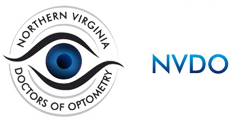As we age, our bodies undergo various changes, and our vision is no exception. Presbyopia, the gradual loss of near-focusing ability, is a common condition affecting most people over 40. While it’s a natural part of the aging process, often sneaking up on us, there are early signs to watch out for. Knowing these signals can help you address them promptly and ensure smooth sailing in your reading adventures.

The Telltale Signs of Presbyopia
Presbyopia emerges as an unwelcome companion of aging. With time, the lens in your eye gradually loses its elasticity — an essential quality for focusing on objects both near and far. As this flexibility diminishes, the eye struggles to focus on nearby objects, leading to the symptoms associated with presbyopia.
- Difficulty Reading Small Print. One of the most noticeable signs of presbyopia is difficulty reading small print. If you find yourself holding a book, menu or other reading material farther away from your eyes to focus, you may be experiencing the onset of presbyopia.
- Eye Strain. Eye strain is another common symptom. If you experience headaches or discomfort when trying to read or focus on near objects for extended periods, presbyopia might be the cause.
- Blurred Vision. Presbyopia can cause blurred vision when looking at objects up close. You may find it challenging to quickly switch focus from distant to near objects, causing your vision to blur during the transition.
- Trouble Seeing in Low Light. Presbyopia may make it harder to see clearly in dim lighting, particularly when reading or focusing on small details. This could mean turning on additional lights or needing brighter illumination to see clearly.
- Needing Glasses. If you haven’t needed glasses before, you may start noticing a need for them, particularly for close-up tasks. This is a common early sign of presbyopia.
If you notice any of these signs, consider having an eye exam to determine whether you have presbyopia. An eye care professional can recommend the best solution for your needs and help you maintain clear vision as you age. Remember, catching presbyopia early can smooth the adjustment process and ensure your vision remains sharp for years.
How To Diagnose Presbyopia
Diagnosis of presbyopia is a straightforward process. It begins with a comprehensive eye exam, during which your eye doctor will ask about any symptoms you’re experiencing. Your near vision will be evaluated using a phoropter and retinoscope — standardized devices for determining the perfect lens prescription to correct your sight.
Treatment Options for Presbyopia
Thankfully, there’s a range of treatment options for presbyopia. For some, simple reading glasses picked up from a store can be enough to correct for near vision. However, most individuals benefit from prescription eyeglasses or contact lenses. Nowadays, multifocal contact lenses or monovision therapy are gaining popularity as modern solutions for managing presbyopia. There are even surgical options available for those who are suitable candidates.
Let Us Help!
Presbyopia is a common, manageable condition, but regular eye care is essential for early detection and treatment. Whether you need a simple pair of reading glasses in Reston, VA, or a more advanced treatment, the Northern Virginia Doctors of Optometry is your go-to eye care provider in Reston, VA. Our team is here to help you enjoy clear and comfortable vision. For swift assistance, call us today at (703) 467-9080. You can also schedule your comprehensive eye examination today by filling out our contact form.



























